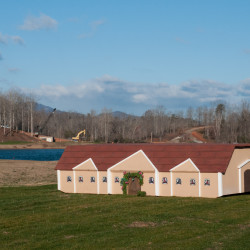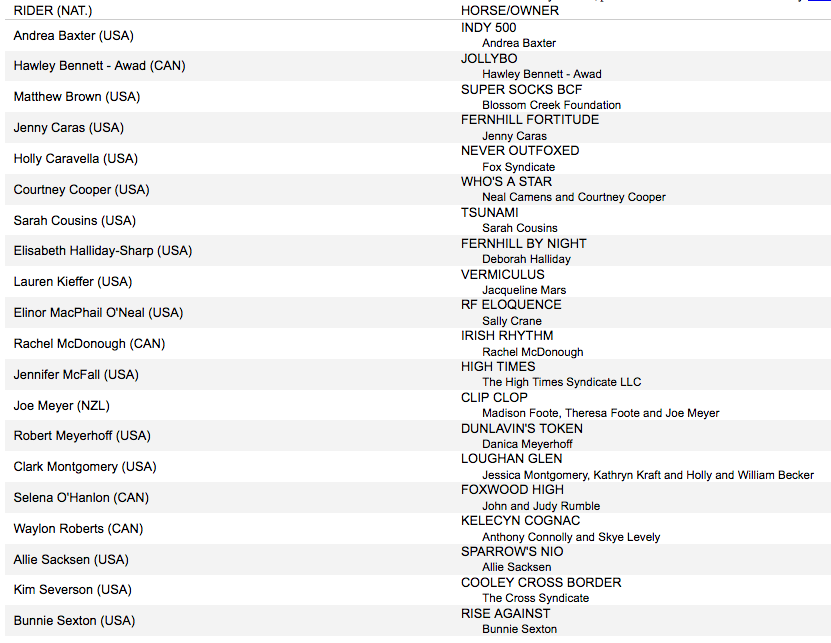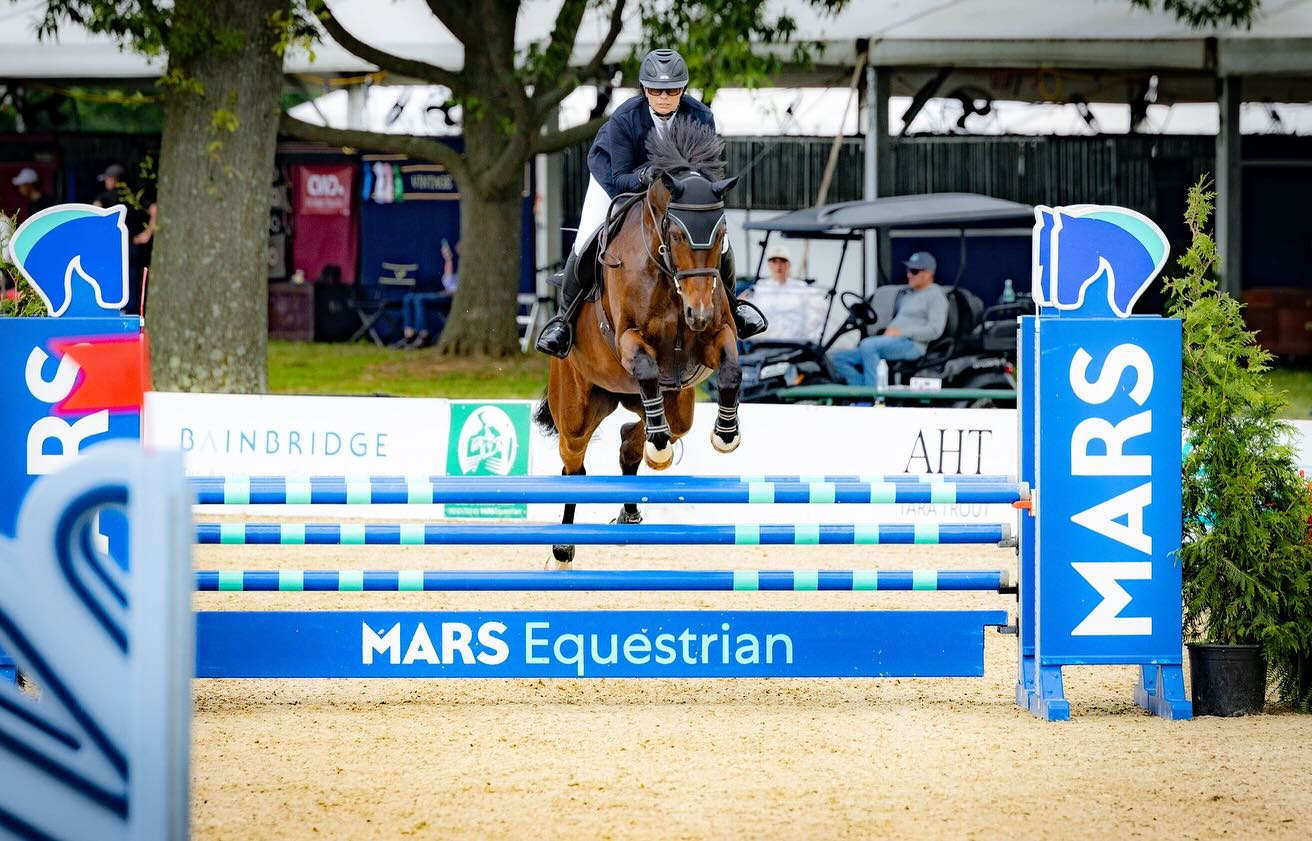What’s in Your Ring? is an EN series sponsored by Attwood Equestrian Surfaces in which riders share their favorite jumping exercises. It’s easy to get stuck in a training rut, and we hope this will inspire you with fresh ideas that you can take home and incorporate into your own programs.
Marcia Kulak is a top multi-discipline rider and trainer who divides her time between a homebase in Scotia, NY, and Wellington, FL. Her operation, Kulak Equestrian, includes event and show horses. Numerous top horses have come thru her program or sold into new careers including Trading Aces, Czechmate, Arundel, Special K, Adele and Santino.
In addition to her thriving business Marcia has dedicated much of her time serving on numerous boards and committees including Brooke USA, The Professionals Riders Organization, the USEF 3-Day Selection and Active Athletes committee. She founded and developed the Triple Crown JR/YR PRO scholarship, which gives two deserving Young Riders a free scholarship to train with a top event rider for a week. She is a tireless worker dedicated to her horses, team and sport, and we’re grateful to her for taking the time to contribute this story to EN!
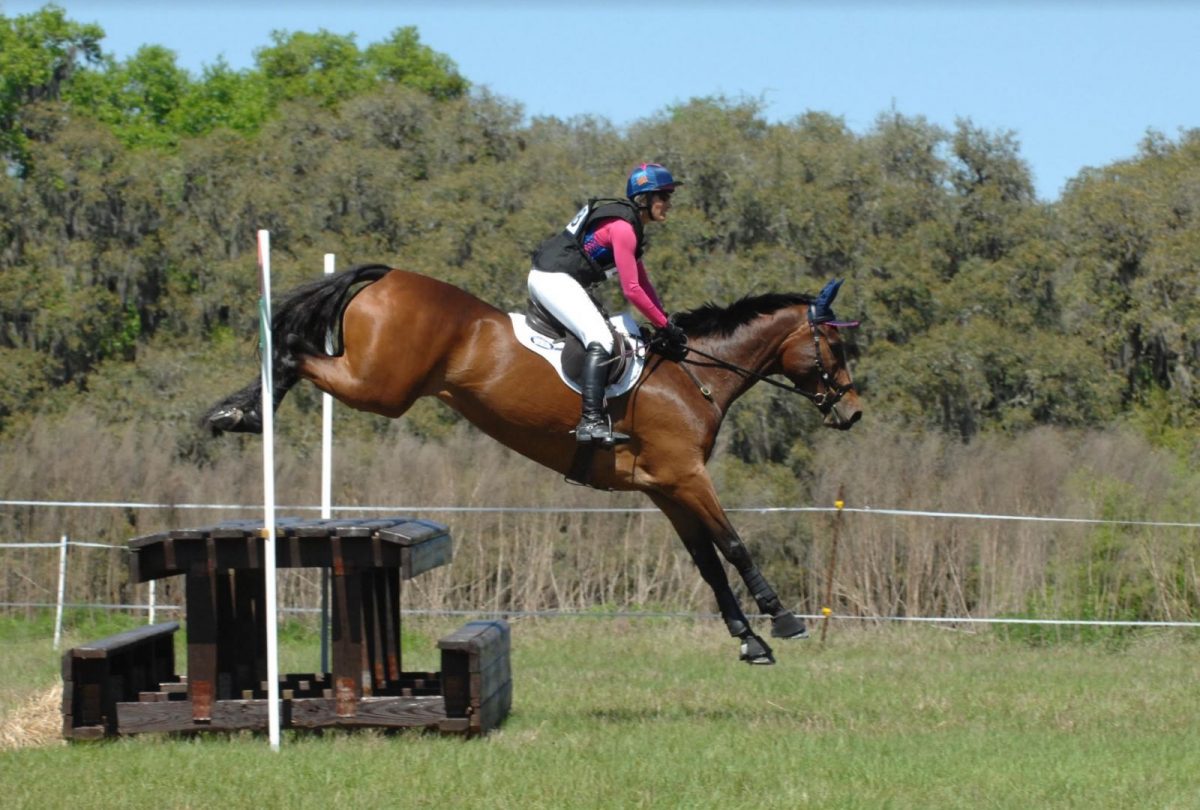
Photo courtesy of Xpress Foto.
Perhaps one of the most underrated tools in horsemanship is the creative use of cavaletti. It can help every level of rider improve their skills and enhance the success and longevity of a horse’s career. Cavaletti does not replace jumping courses and preparing for competitions; instead it serves to augment training and skill development without increasing fair wear and tear and the emotional stress that may accompany it.
At Kulak Equestrian, we have a wide variety of horses in several disciplines: eventers, show horses and dressage. Some are in the program long term and others are here to be developed and sold. Many are moving from one discipline to another i.e. eventer to show jumper or hunter. The riders who train with us also come from cross disciplines so it’s imperative to have tools that can be blended for all and at the same time, when necessary be very specific for each individual.
For material I prefer “proper” cavaletti, preferably 10′ to 12′ 4×4’s with beveled edges (pressure treated so they last forever). Round rails or PVC are potentially very dangerous. If a horse makes a mistake the rails can roll and trip them up. Horses use themselves better and became more conscientious about their footwork if the rails are stout. I want them to stay in place and not be dislodged easily.
I measure regularly with a tape to insure accuracy. My goal is to improve the horses mentally and physically. Initially, to do that they must develop a trust in their footwork and that begins with correct footage until confidence and rideabilty have been well established. Anxiety tends to diminish the quality of performance in both horses and riders so my goal is to minimize that risk with measurements that are safe and friendly until both are fully prepared to handle more difficult questions. Keep in mind the distances given may need to be adjusted for your horse based on training, experience, etc. Always seek advice from a qualified instructor to be sure you’re getting it right.

Exercise One: This is for a horse with basic straight line cavaletti experience. Trot rails on a circle accommodate a wide range of stride lengths and skill levels. Here I use 4×4’s with the outside rail on a plastic block and the inside edge on the ground. With the outside of the rails higher it will further engage the inside hind leg and encourage more reach with the outside foreleg, creating top line, core strength and more expression in the trot. For the rider, they have to maintain connection, balance and direction throughout the circle. For the very proficient, this exercise can be done in haunches in and shoulder fore.
Exercise Two: The Weave. Use cavaletti set on the lowest height to begin. Establish a good working canter and approach on a long diagonal line slicing across the CENTER of the rail, then a rollback turn to the second rail on the other lead. Repeat four or five times until the horse begins to read the pattern of the exercise.
The rider must stay perpendicular to the ground and not be tempted to throw their body to the new direction. Again, it’s important that the horse maintain shape and connection between the leg and hand. Upright and balanced turns, with slight outside flexion will insure success. I use this exercise to help teach flying changes as well. To increase the degree of difficulty put the two together on a bending line and graduate to small narrow-faced wall boxes, chevrons or corners to simulate common questions on today’s modern cross country courses.
Exercise Three – Five: Use four cavaletti set on the lowest height at 9’6″ apart. Add another cavaletti on a bending line 68′ (comfortable five strides) from the bounces.
Initially just canter back and forth over the bounces themselves. Pay special attention to the quality of the horses effort. Keep the horse connected and round; try not to allow them to push apart and gain ground through and after the bounces. The goal is to have the horses jump up and around in an equal arc to produce a proper shape in the air. Whatever lead you begin the exercise on the horses should remain on that lead through the bounces, not swap off or shift off the line.
Once that is well established, continue on and add the bending five strides to the exercise. Bending lines of five to seven strides are a frequently asked question in event show jumping. This exercise helps a rider determine which track to take on whatever length of stride that suits their particular horse.

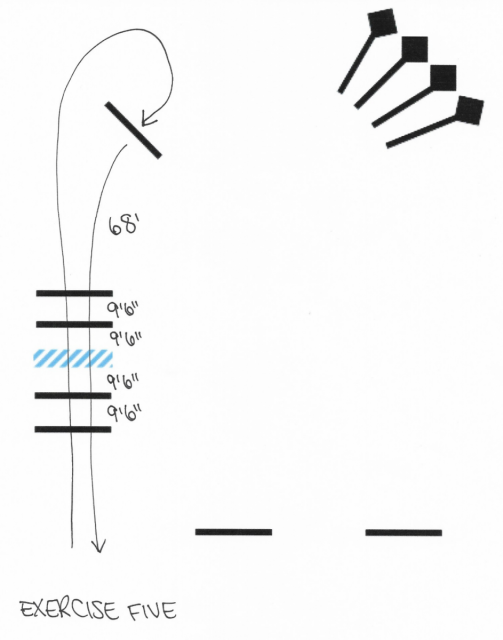
The exercise has no less than four options, either bounces to the bending line or bending line to the bounces. To increase the degree of difficulty, I add a fifth element in the middle of the bounces, not more than 2’6” in height. One can use wall boxes, a small coop, a narrow liverpool, or faux ditch. It gives a horse a new perhaps spooky look and keeps them sharp. We change the middle “surprise” element several times a week.
In the final diagram, you can see where I blend or make a mini course of all the exercises: the weave, the bounces, and the bending line are all incorporated. This will test the rider’s ability to maintain their three responsibilities:
1. Correct Rhythm (quality of the canter)
2. Track (Where you are going before, during, and after the exercise)
3. Position/balance (the ability to influence the correct equilibrium between the horse and rider)

Balance is the key. The rider needs to become the stability in the equation. Maintaining these ground rules will help the horse focus on their footwork which is their responsibility. Instead of trying to “find a distance” the rider needs to “own” the correct rhythm, track and balance until a distance shows itself. The hallmark of great riders is their ability to do enough to get the job done correctly without over riding. We can all aspire to improve just by following that simple principle.
Incorporating these exercises regularly into your horses training program will enhance rideabilty, suppleness, lead changing and balance. At the same time the rider’s position, core strength, ability to see a stride and confidence will also flourish. These are the elements necessary to jump a safe, clean and time efficient round, either cross country, show jumping or even a hunter derby.
Remember to enjoy the journey and good luck!
Do you have an exercise to share or is there an eventer you would like to nominate for the “What’s in Your Ring?” series? Email [email protected].
Good Footing – Attwood Equestrian Surfaces from Bold Horse Media on Vimeo.










